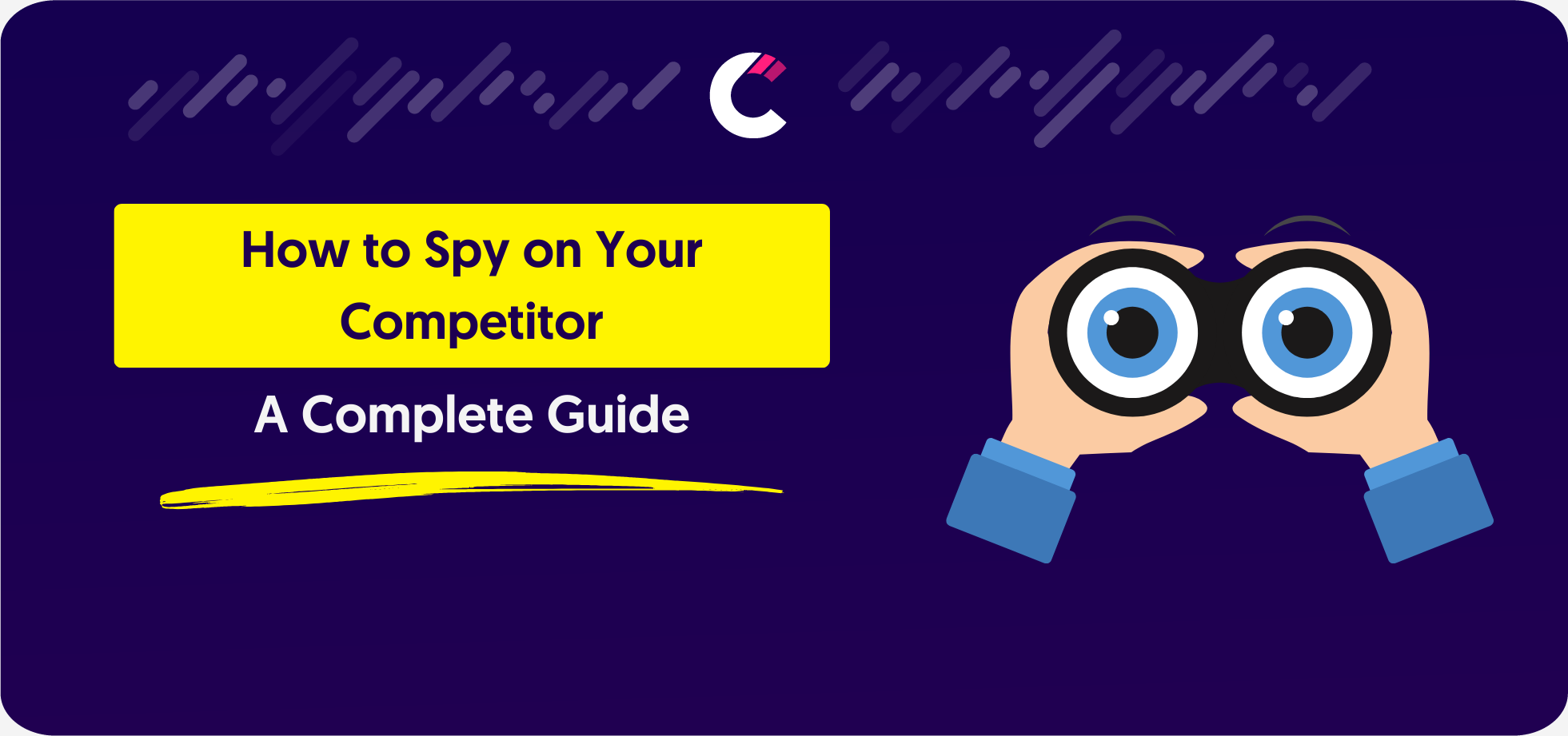
The art of competitor analysis has evolved drastically from its humble beginnings. Initially, businesses would observe their rivals from a distance, gathering only surface-level insights. However, as the digital landscape expanded, so did the opportunities for deeper, more strategic espionage. Today, spying on competitors isn’t about lurking in dark corners; it’s about smartly navigating the digital world to gain actionable insights.
Let’s delve into why spying on your competition is crucial and how it can catapult your business ahead of the curve. From understanding their SEO strategies to decoding their social media tactics, this comprehensive guide will equip you with the tools and knowledge to not just watch your competitors but to outmaneuver them strategically.
Stay tuned as we explore the intricacies of competitor analysis, transforming this once clandestine activity into your business’s secret weapon for success.
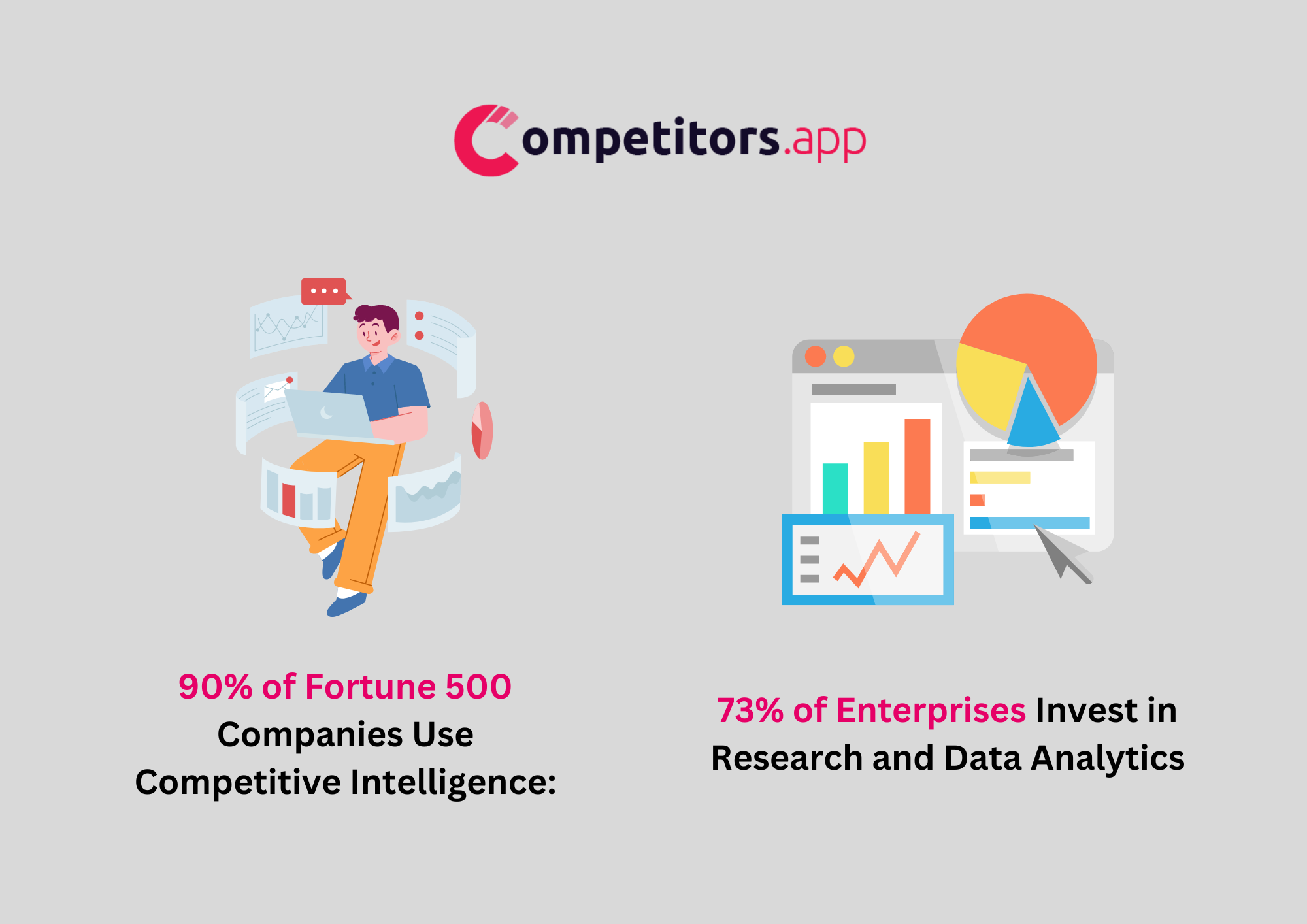
In the cutthroat arena of business, spying on your competitors is not merely advantageous; it’s a critical strategy for maintaining a competitive edge. This practice is underscored by some compelling statistics:
These stats emphasize that spying on your competition is a vital component of a successful business strategy, enabling you to stay one step ahead in the market.
“When embarking on a covert mission to spy on your competitors, where do you start?” is a question on many minds. The answer lies in a multi-faceted approach.
First, consider their website. It’s their digital storefront, and a lot can be learned from it. Pay attention to design, user experience, and content. Are they targeting keywords you haven’t considered? How are they structuring their information? There are 30 monthly searches for “spy on competitors website,” indicating a high interest in this tactic.
Next, delve into their SEO strategies. “How to spy on your competitors SEO” and “spy on competitor keywords” both have a notable search volume. Understanding their SEO tactics, from keywords to backlinks, can reveal much about their online presence and strategy.
Don’t overlook their social media and advertising efforts either. With 30 searches per month for “spy on competitors ads,” it’s clear that advertising strategies are also on the radar. Analyze their social media engagement, ad placements, and messaging. What are they doing that resonates with the audience?
Finally, website traffic analysis is crucial. Gaining insights into where their traffic is coming from and how they’re acquiring it can be invaluable in shaping your own strategies.
On top of that there are several other things you can look at when spying on your competitors, some of them are:
Business Strategies: This involves understanding the competitor’s long-term goals, expansion plans, market focus, and sales approaches. It’s about grasping their vision and how they plan to grow and compete in the industry.
Product Analysis: Look closely at their product range, unique features, and any innovative aspects. Understand how their products meet customer needs and how they differ from yours, which can provide insights into potential market gaps or opportunities.
Marketing Techniques: Observe their advertising campaigns, branding efforts, digital marketing strategies, and use of social media. This can reveal their target demographics, market positioning, and effectiveness in reaching their audience.
Customer Engagement: Analyze their customer service approach, responsiveness on social media, and engagement strategies. This helps to understand their customer relationship management and loyalty-building tactics.
Pricing Models: Assessing their pricing strategy helps understand their market positioning – whether they compete on price, quality, or value. It can also reveal their target customer base and price sensitivity.
Technological Adoption: Identify the software and hardware tools they use in operations, sales, marketing, and other areas. This shows their level of innovation, efficiency, and technological advancement.
Financial Health: If available, reviewing financial statements can give insights into their revenue streams, profitability, investment in research and development, and overall financial stability.
Let’s explore these areas in more detail.
Spying on competitor websites offers a treasure trove of strategic insights, yet the process can be nuanced. Understanding their digital strategies goes beyond a superficial glance; it demands a deep dive into various elements that contribute to their online success. Let’s analyze these elements in more detail:
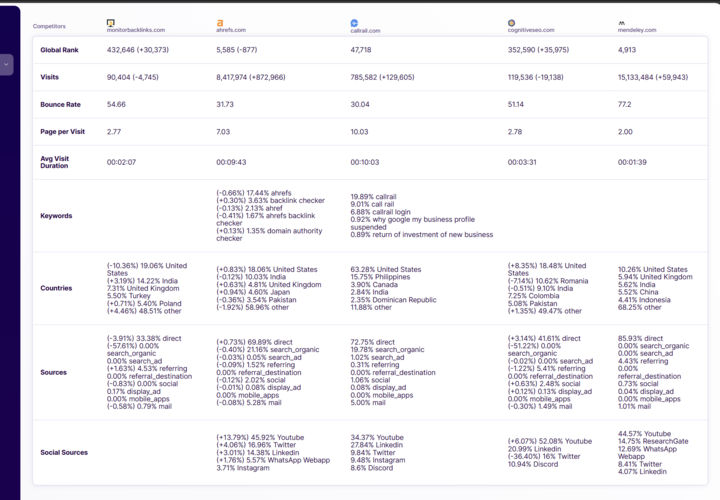
Understanding where your competitor's traffic originates is crucial. Is it organic search, paid advertising, or social media? Tools that offer traffic analysis can also reveal the effectiveness of their content strategy and user engagement.
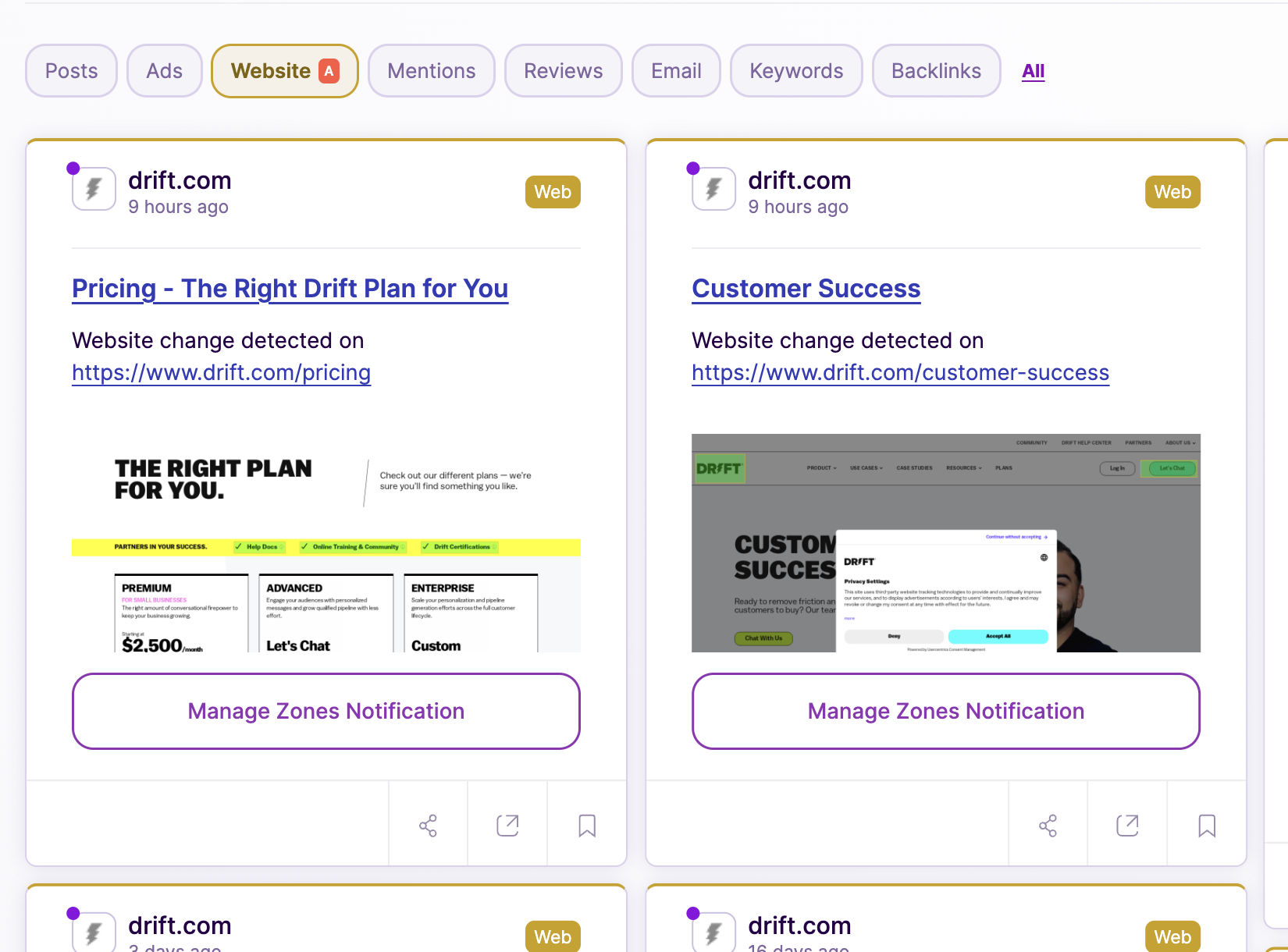
Monitoring changes on competitor websites can be enlightening. Keep an eye out for new features, content updates, or design changes. This can give you a heads up on their shifting strategies and priorities.
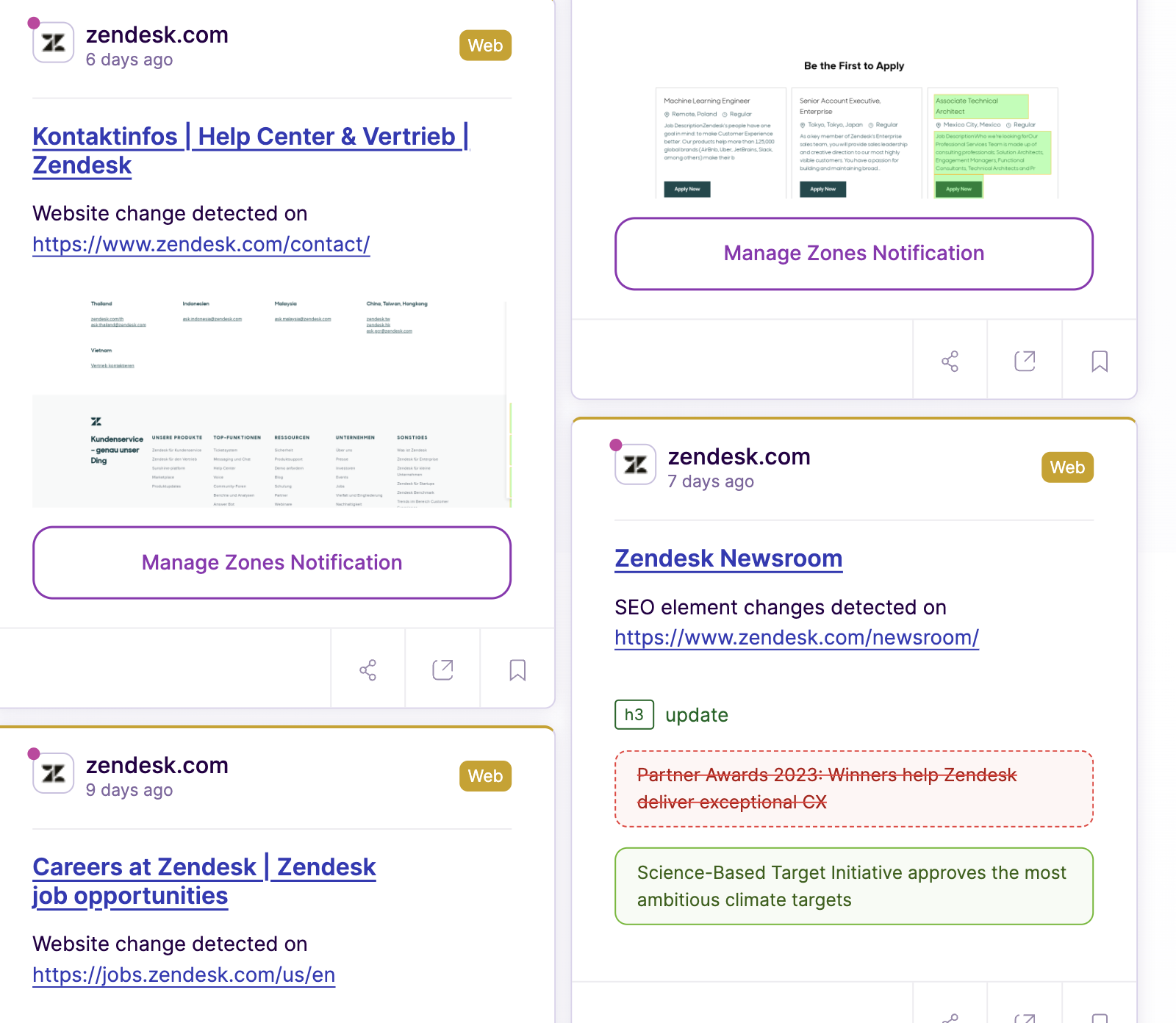
Stay ahead by monitoring any new products or services your competitors launch. This can help you anticipate market trends and plan your own product development accordingly. At the same time by adding website change monitoring to their most important product pages, you'll be able to unveil a wide variety of strategic insights like what messages resonates with your audience.
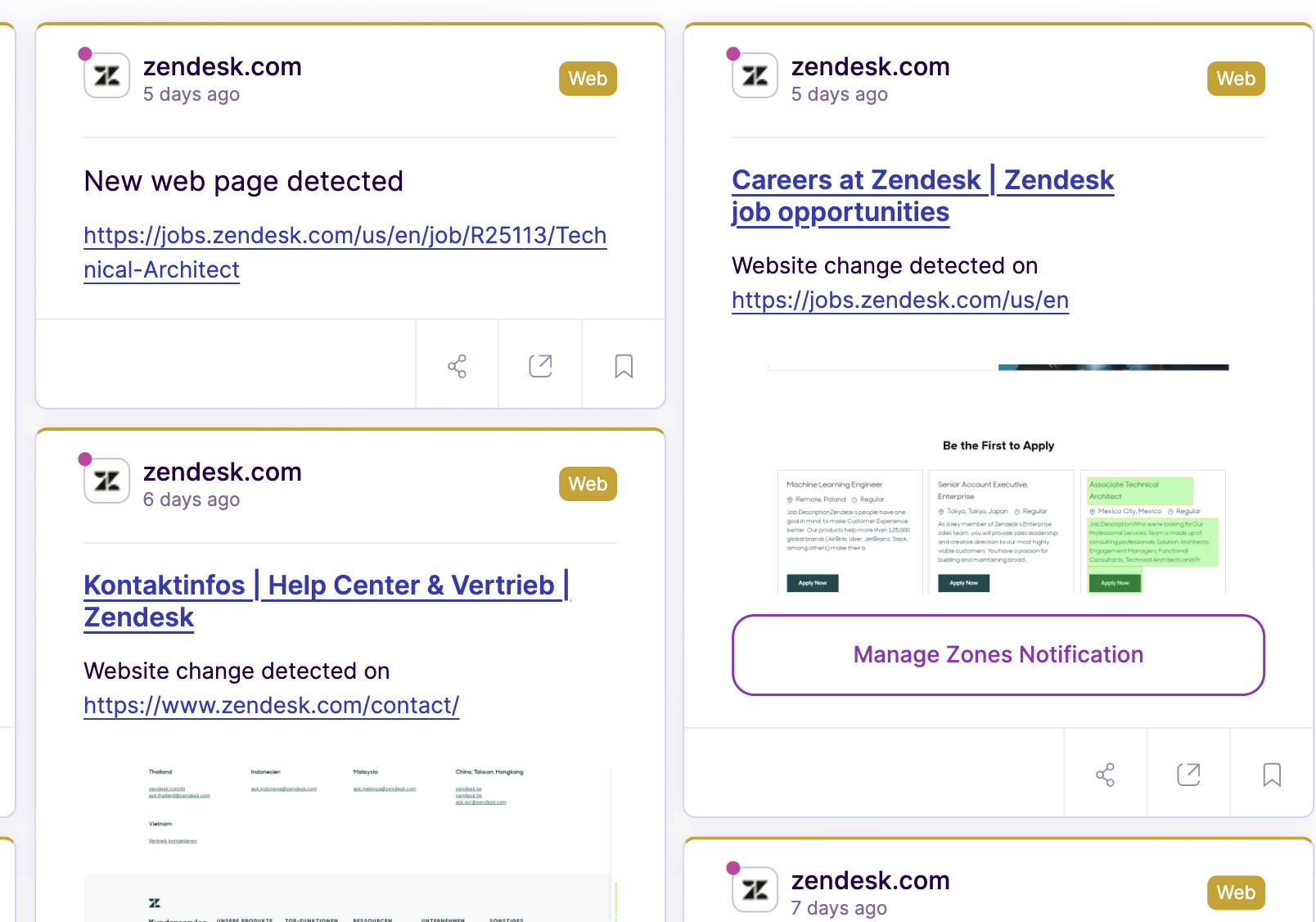
Any Performance Marketer would know that CRO is the crux of a competitor’s conversion strategy. Analyze their ads pages and homepage for insights into their messaging, offers, and design elements that are resonating with their audience. Any Perf

An all-in-one monitoring tool that tracks competitors’ website changes, new pages as well as social media activity, SEO, email marketing, and more, providing a comprehensive overview of their online strategies.

Visualping is a specialized tool designed for monitoring changes on websites, which is particularly useful for keeping an eye on competitors' online activities.

ChangeTower is another cloud-based tool that monitors website changes and alerts you, via email, of web page changes.
Spying on your competitor’s SEO is a crucial aspect of understanding their digital strategy. This involves several key areas:
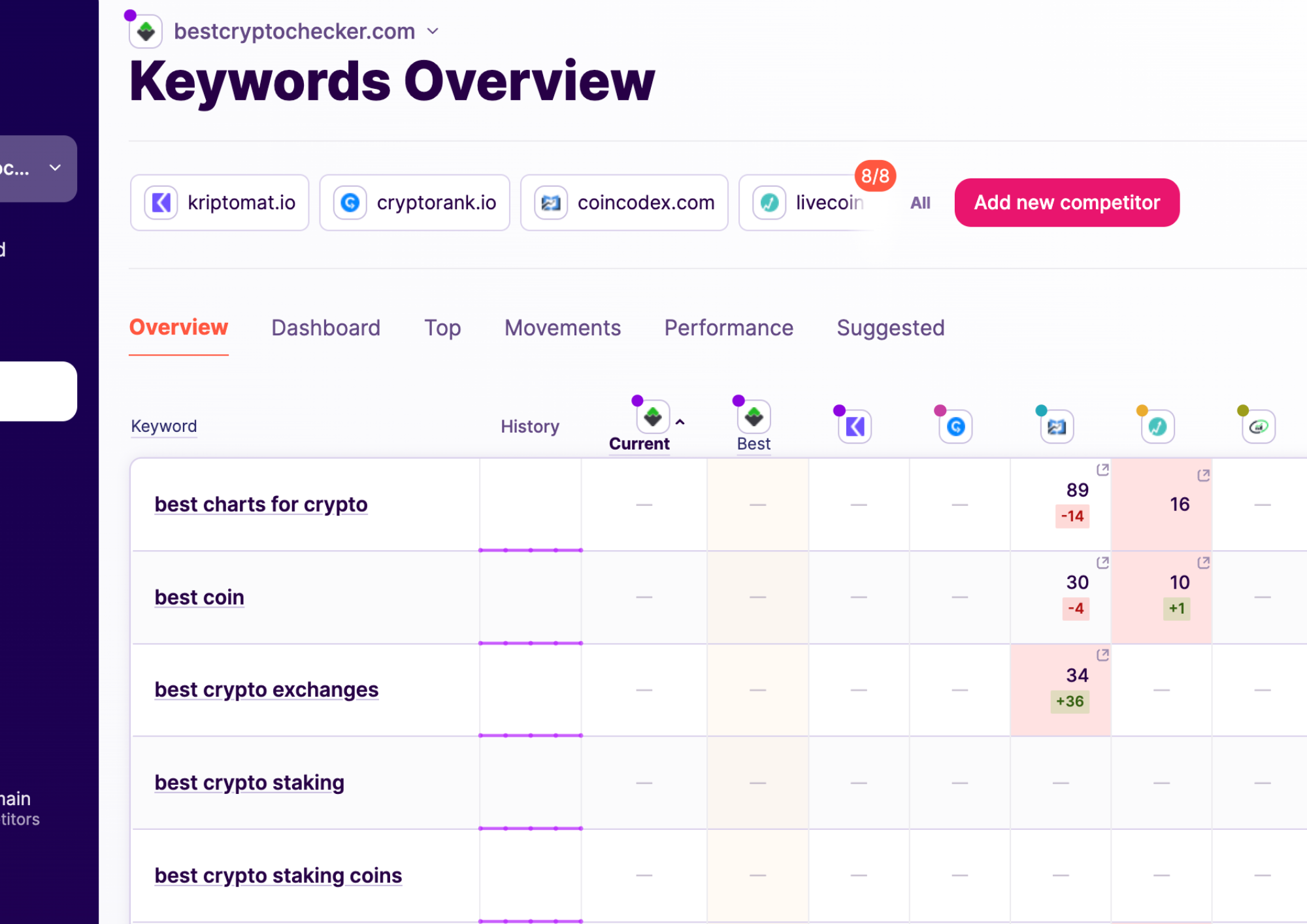
By performing SEO competitor analysis, you are able to find the keywords your competitors rank for can give you an idea of their target audience and content strategy. Look for gaps in their keyword strategy that you can exploit.
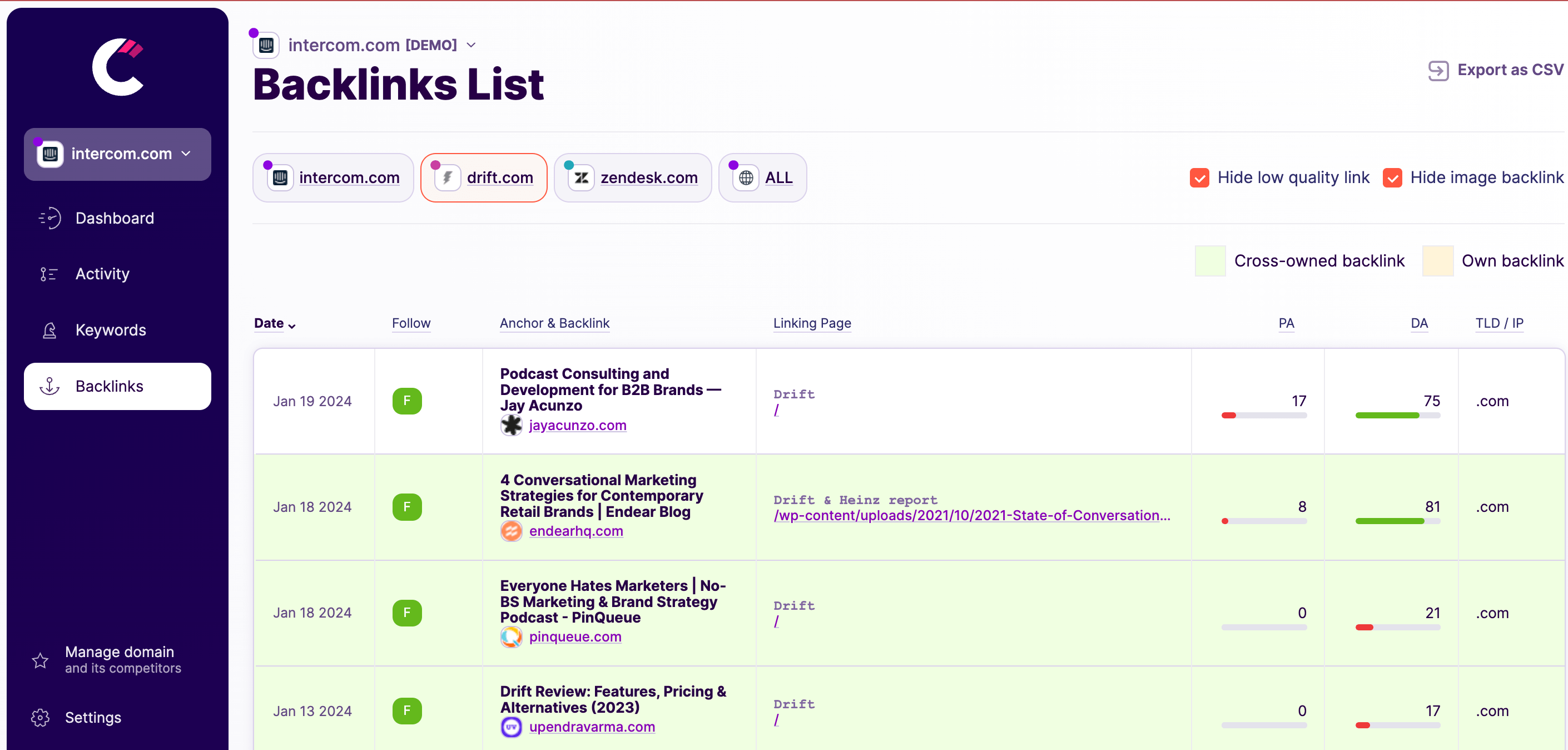
Backlinks are a vital part of SEO. Spying on your competitors’ backlinks means examining where their backlinks are coming from, the quality of these backlinks, and how their backlink strategy contributes to their overall SEO performance.
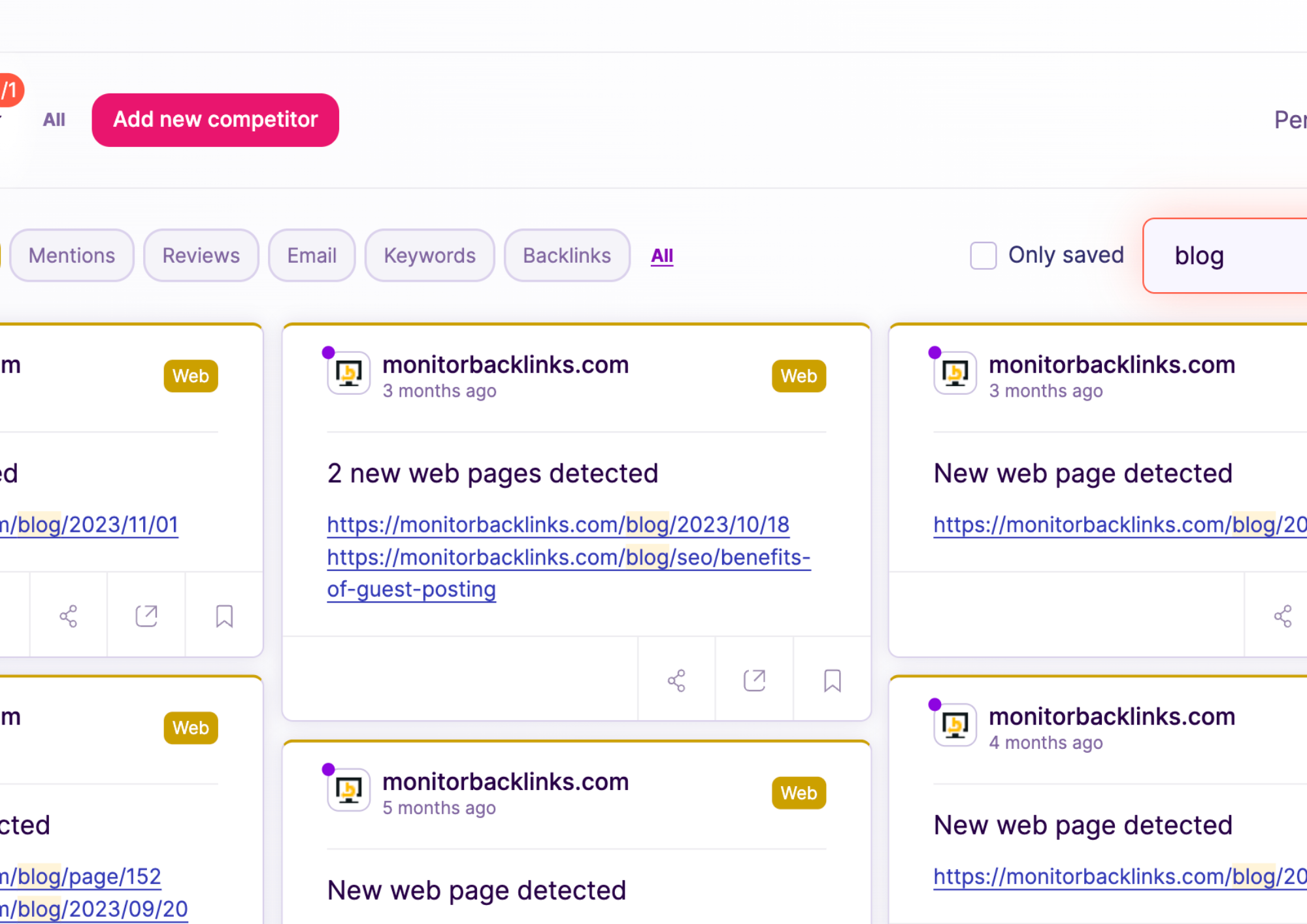
Analyzing a competitor’s blog can reveal much about their content strategy. Pay attention to the frequency of their posts, the topics they cover, the engagement they receive, and how their content is optimized for SEO.

Provides insights into competitors' SEO strategies, allowing you to see their keyword rankings, backlink sources, and overall search engine performance.Competitors App offers also a free competitor keyword finder version for those who want some freebies.

A robust tool for SEO analysis, specializing in backlink checking, which helps you understand where competitors are getting their most valuable backlinks.

Offers a range of SEO tools, including keyword research, site audits, and link analysis, useful for a comprehensive SEO monitoring.
Spying on your competitor’s advertising and marketing activities gives you a comprehensive view of their strategies and tactics.
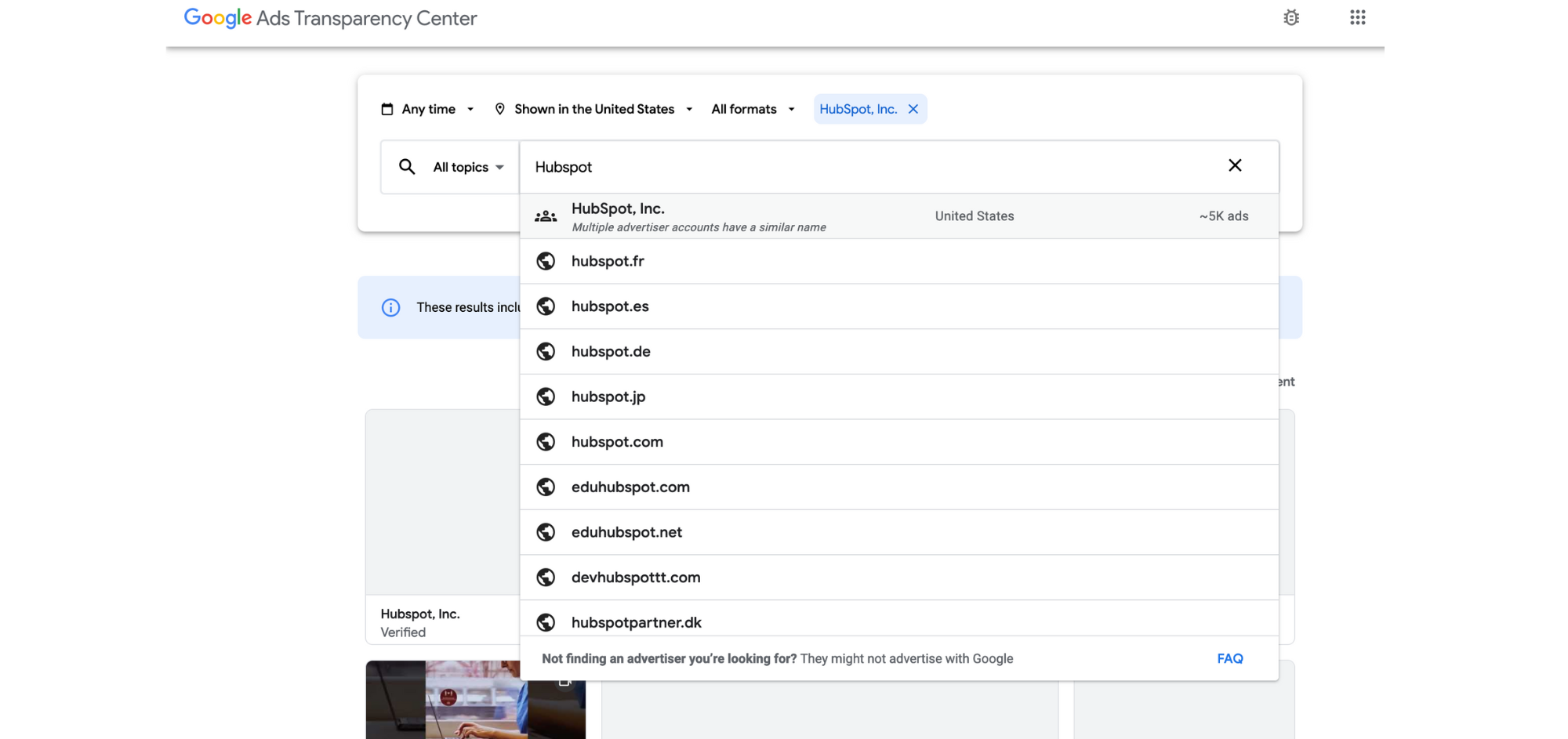
To understand how your competitors are using Google Ads, focus on the keywords they are targeting, the structure of their ad campaigns, and the messaging and offers in their ads. Analyzing these elements can reveal their target audience and the effectiveness of their campaigns.
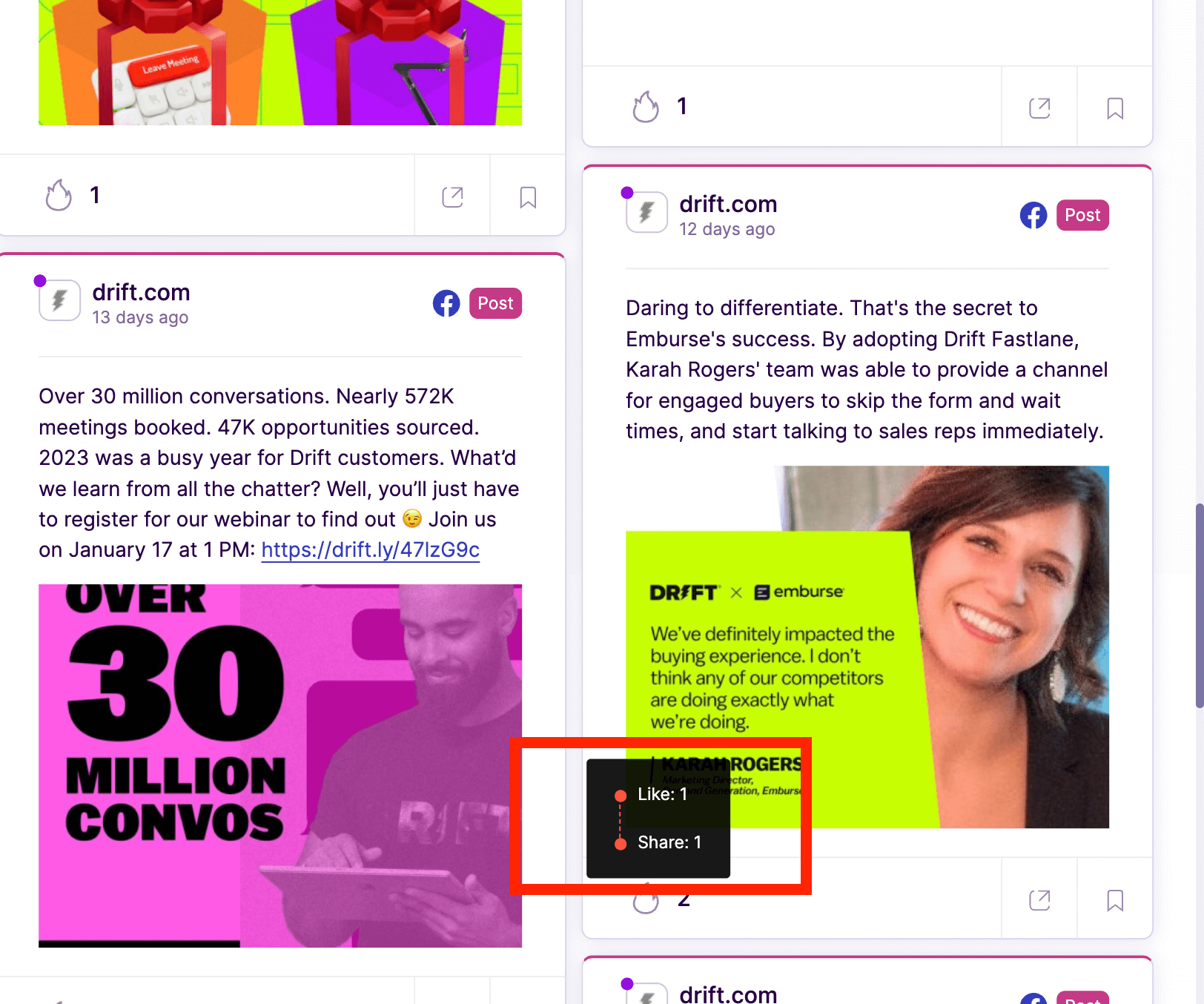
Spying on Facebook campaigns involves observing the types of ads competitors run, their engagement rates, targeted demographics, and the content strategy they use. This can provide insights into their social media marketing strategies.

Monitoring competitors' native ads requires looking at the platforms they choose, the content of the ads, and how these ads blend with the platform's content. This will give you an idea of their approach to more subtle, content-driven advertising.
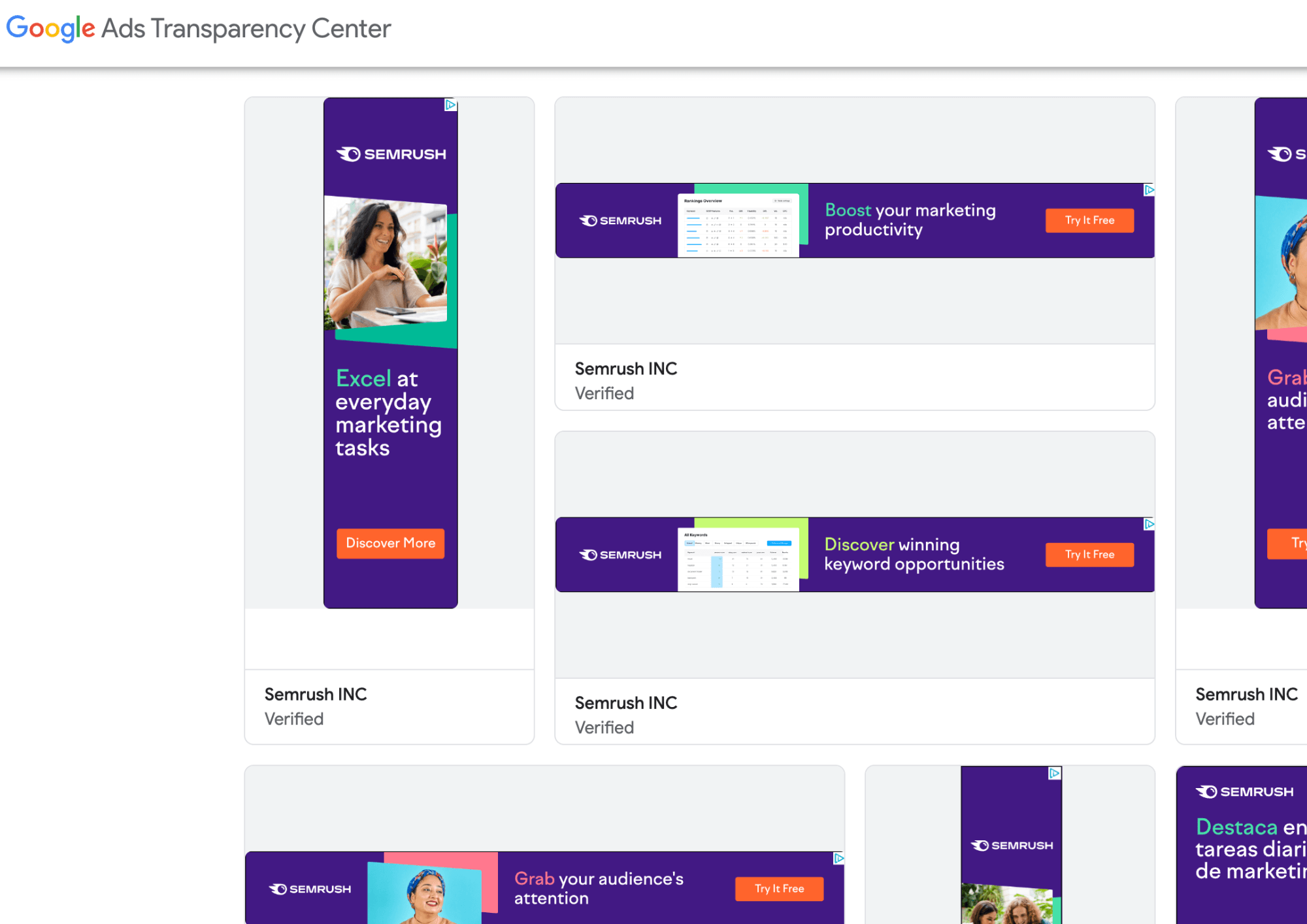
To spy on display ads, pay attention to the design, messaging, and placement of these ads across various websites. This can offer insights into the visual appeal and reach of their advertising efforts.
As mentioned above, spying on competitor advertising and marketing activities offers valuable insights into their strategy, audience targeting, and creative approaches. Here are key aspects to focus on:
Campaign Analysis: Examine their ad campaigns for messaging themes and offers. Notice any patterns in their promotions or special deals.
Audience Targeting: Observe the demographics they target. Are they focusing on a particular age group, location, or interest?
Creative Strategy: Pay attention to the design and copy of their ads. What tone are they using? Is it formal, playful, or innovative?
Seasonal Trends: Notice any seasonal or event-based advertising. How do they align their marketing with specific times of the year?
Engagement Metrics: Look at the engagement levels on their social media ads. High engagement can indicate effective ad content.

This tool allows businesses to monitor various aspects of their competitors' digital marketing strategies, including their advertising campaigns. Competitors App tracks ad in various channels more than any other competitors from Google, LinkedIn, Facebook and Instagram.

Specialized in providing a comprehensive view of competitors' advertising efforts, AdBeat offers detailed analysis on ad creatives, spending patterns, and the networks being utilized. This tool is particularly useful for gaining insights into the effectiveness and scope of competitors' display and digital advertising campaigns.

Known for its PPC analysis capabilities, SpyFu allows you to see the keywords competitors are bidding on, their ad variations, and estimated budgets for paid search campaigns. This can be crucial for refining your PPC strategies and identifying potential opportunities.
Spying on your competitor’s advertising and marketing activities gives you a comprehensive view of their strategies and tactics.
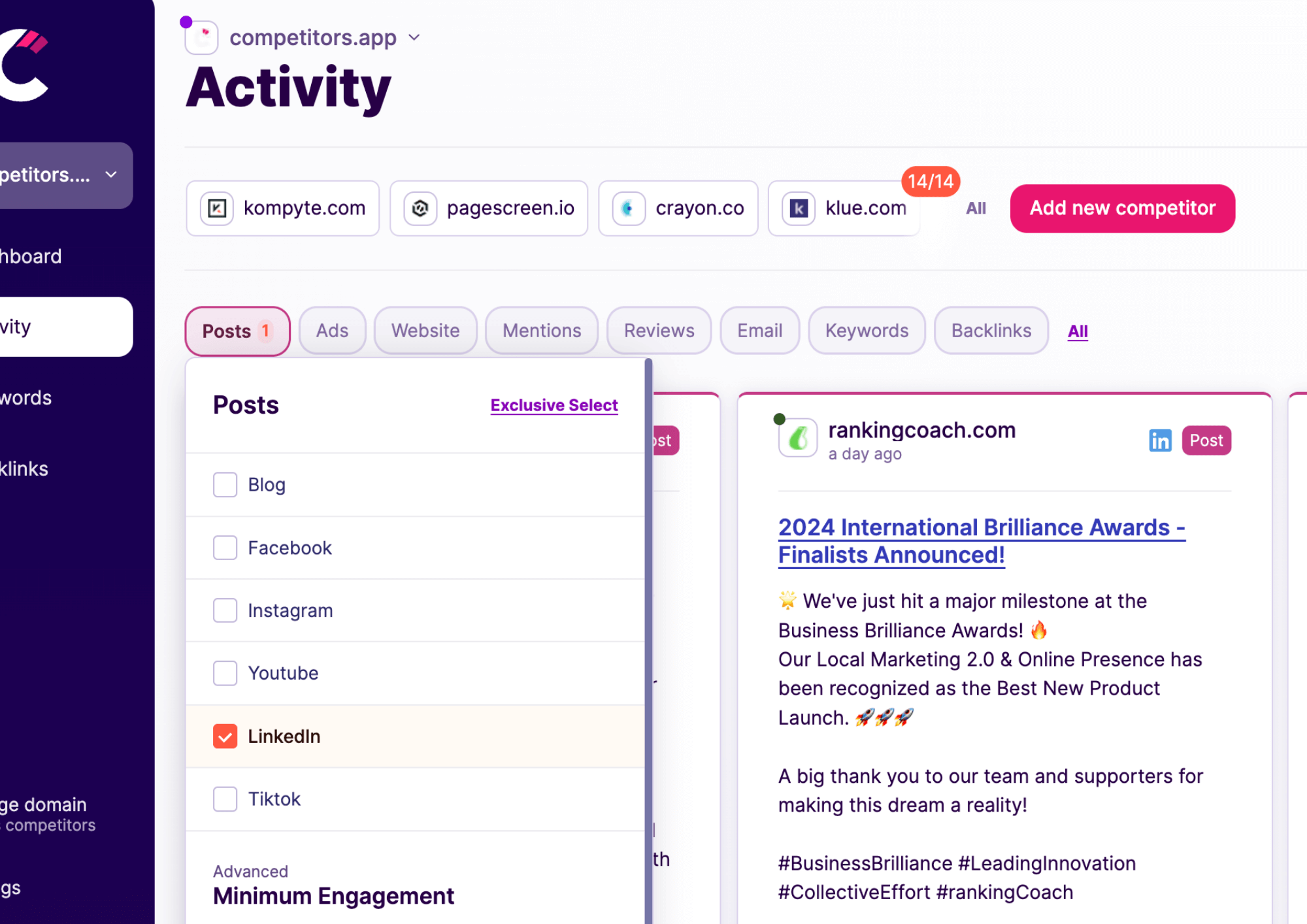
Observe their company updates, posted articles, and engagement with users. Also, note the professional network they are building and the types of content they share.
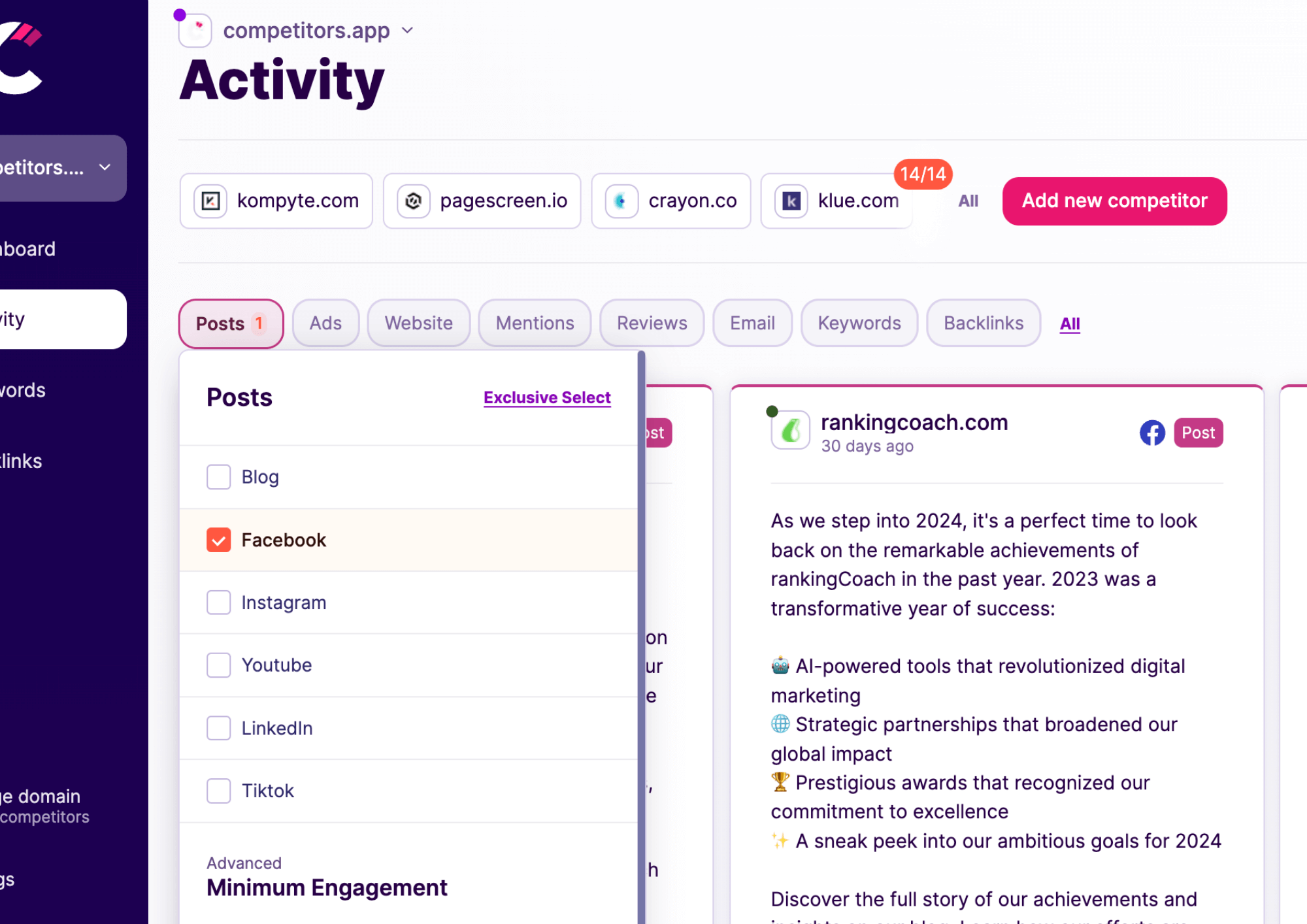
Monitor their posts, user engagement, frequency of updates, and any special campaigns or promotions they run on this platform. For example giveaways or contests.

Track their tweets, retweets, hashtag usage, and engagement levels. Twitter can provide insights into their real-time marketing and communication strategies.
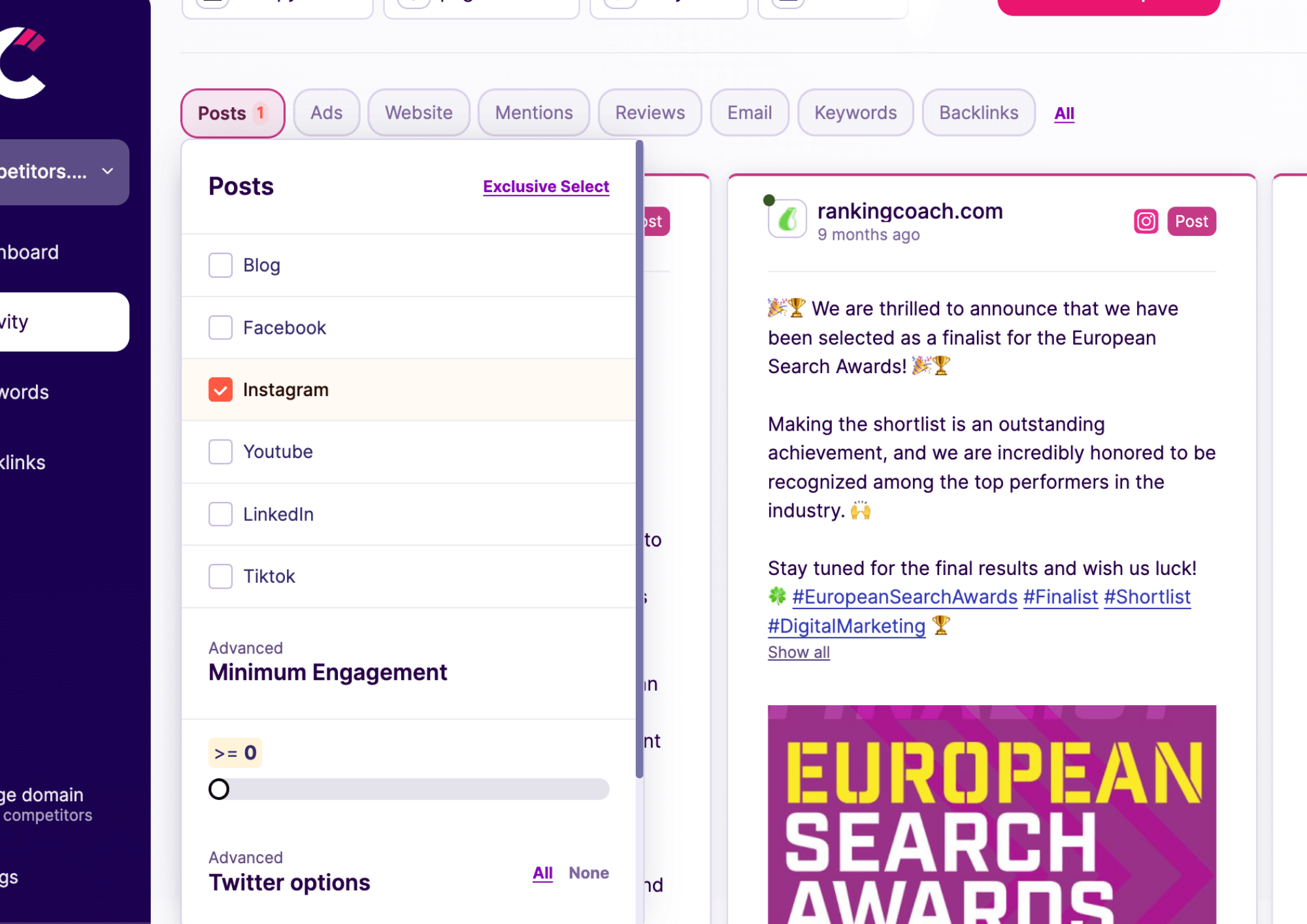
Examine their content style, posting frequency, engagement with followers, and use of Instagram stories and reels. Instagram is key for visual branding and audience interaction. At the same time, track their influencer collaborations and content syndication.
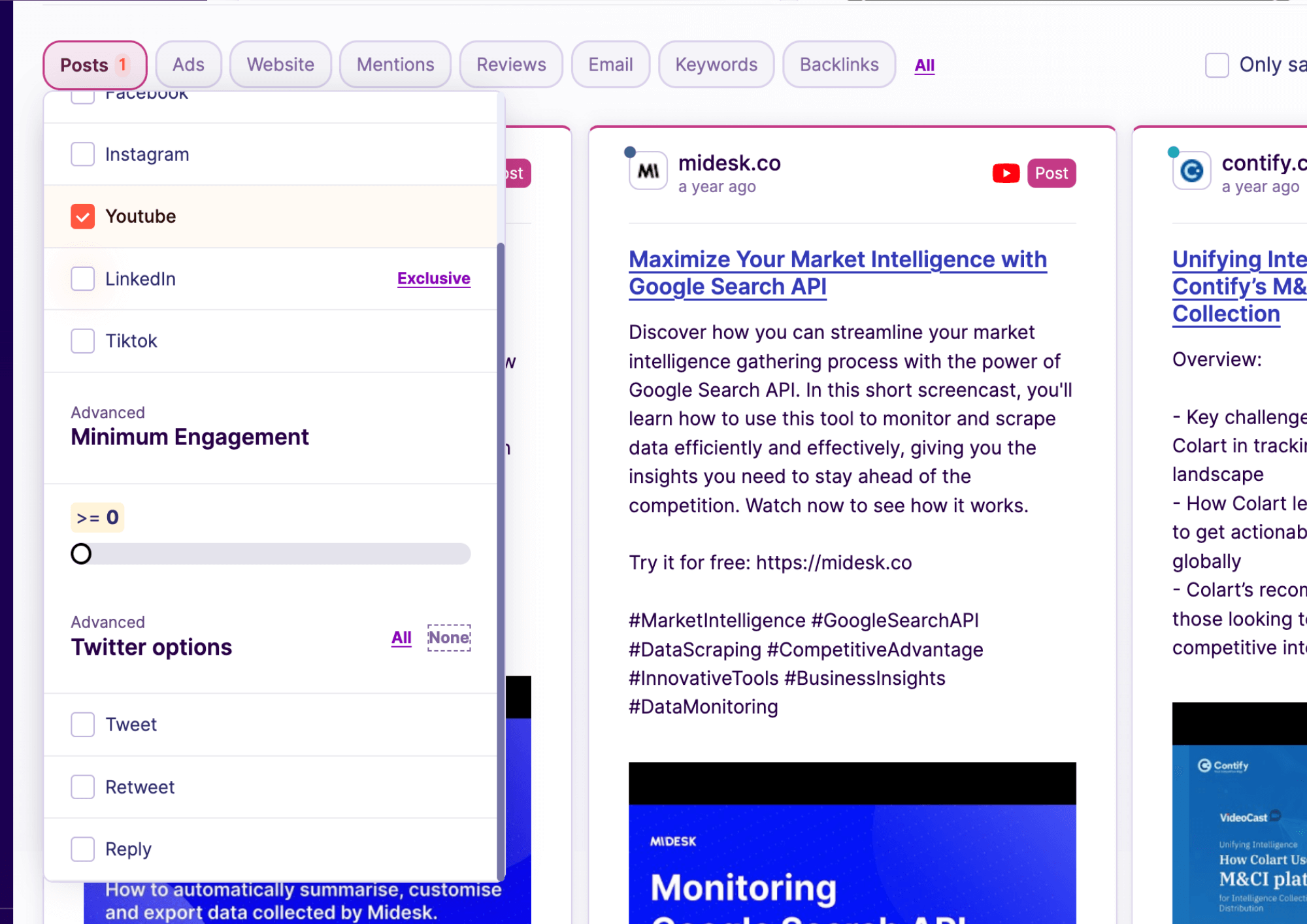
Look at their video content, posting schedule, viewer engagement, and the topics they cover. YouTube analytics can reveal a lot about their content strategy and audience reach.

Observe the style and frequency of their posts, engagement trends, and use of music and effects. TikTok's unique format offers insights into their approach to trendy and creative content.
In each platform, the goal is to understand how competitors use social media to connect with their audience, promote their brand, and engage users. This can help inform your own social media strategy.

Tracks competitors’ social media activities, including posts, engagement rates, and follower growth across multiple platforms.

A social media management tool that allows you to monitor competitors’ social media posts and engagement across various networks.

Specializes in content analysis and social listening, helping you understand the reach and impact of competitors’ social media content.

To spy on your competitor’s email marketing activities, you should consider the following methods:
By carefully analyzing these aspects, you can gain insights into your competitor’s email marketing strategies and tactics, which can help you refine your own email campaigns.

This tool allows you to track and analyze your competitors' email marketing strategies. Competitors App can monitor the frequency of email campaigns, the content within these emails, and any promotional strategies used. This insight can help you understand how your competitors engage with their audience and can inspire improvements in your own email marketing strategy.

MailCharts provides comprehensive data on competitors' email marketing, including campaign frequency, content analysis, and strategy insights. It allows you to understand the types of emails your competitors are sending, such as newsletters, promotional emails, or transactional messages, and how they structure these communications to engage their audience.

Owletter captures and stores your competitors' emails, giving you the ability to analyze their email marketing over time. This tool is particularly useful for spotting trends, understanding seasonal campaigns, and getting inspiration for your own email content and design.
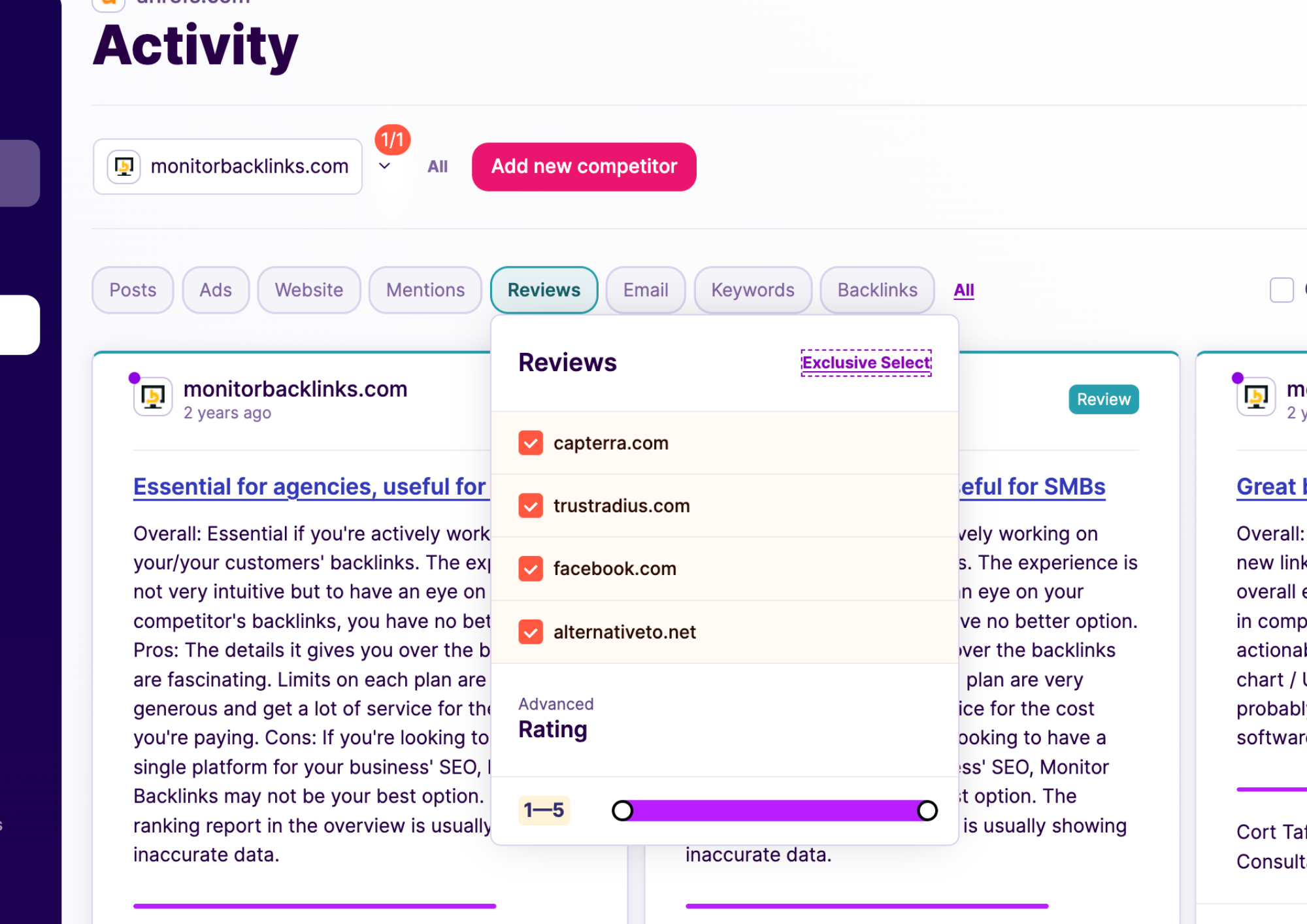
Spying on competitor reviews involves a deep analysis of customer feedback across various channels. Here are some insights into how to effectively do this:
By thoroughly analyzing competitor reviews, you can gain valuable insights into market expectations, competitor strengths and weaknesses, and areas for potential improvement in your own business.

This tool not only monitors various aspects of competitors' digital marketing strategies but also tracks customer reviews across different platforms. On top of that Competitors App uses AI to aggregate and get insights from these reviews. Giving your marketing and sales team the competitive edge.

Specialized in aggregating and analyzing customer reviews from various websites, ReviewTrackers helps businesses understand their competitors’ customer satisfaction levels. It offers insights into customer sentiment, common complaints, and praised features, which can be crucial for benchmarking your own service quality and customer satisfaction.

While primarily used for gathering and displaying reviews for your own business, Yotpo can also be used to monitor competitors by analyzing publicly available reviews on their products. This can help in understanding the strengths and weaknesses of competitors' offerings from a customer perspective.
After gathering intelligence about your competitors, it’s crucial to turn these insights into effective strategies:
Benchmark Against Competitors: Use your findings to benchmark your business against competitors. Identify areas where you excel and where you need improvement.
Innovate Based on Gaps: If reviews or analyses reveal gaps in competitors’ offerings, consider how your business can fill these gaps.
Adapt Marketing Strategies: Refine your marketing and advertising strategies based on the successful tactics of competitors.
Enhance Customer Experience: Implement changes in customer service or user experience if competitor reviews highlight specific demands or issues.
Develop New Products or Services: Insights about competitors’ products can inspire innovation in your own product line.
Stay Ethical and Legal: Ensure that all competitive intelligence activities are ethical and legal. Use the information for inspiration and improvement, not for copying or infringing on competitors’ rights.
By strategically applying the insights gained from competitor analysis to a templated document, you can enhance your business’s competitive edge and market position.
Competitors App is an excellent choice, offering comprehensive features for monitoring various aspects of your competitors' online presence, including social media, SEO, and marketing strategies.
For those looking for a free option, Google Alerts provides basic monitoring capabilities, although it's less comprehensive compared to specialized tools like Competitors App.
It's advisable to monitor your competitors regularly, possibly weekly, to keep up with any significant changes or trends in your industry.
Yes, it's crucial to adhere to ethical guidelines. This means avoiding any illegal methods like hacking and respecting privacy and intellectual property laws.
Definitely. Small businesses can gain crucial insights into market trends, customer preferences, and effective strategies by monitoring their competitors, helping them to compete more effectively.
Throughout this guide, you’ve learned the intricacies of spying on competitors at a detailed level. Key takeaways include the importance of analyzing competitor websites, SEO, social media, email marketing, and advertising activities. You’ve discovered how to ethically gather and analyze competitor reviews and transform these insights into actionable strategies for your business. The guide has equipped you with the knowledge and tools needed to monitor and adapt to industry trends, helping you refine your business approach and stay ahead in the competitive market.